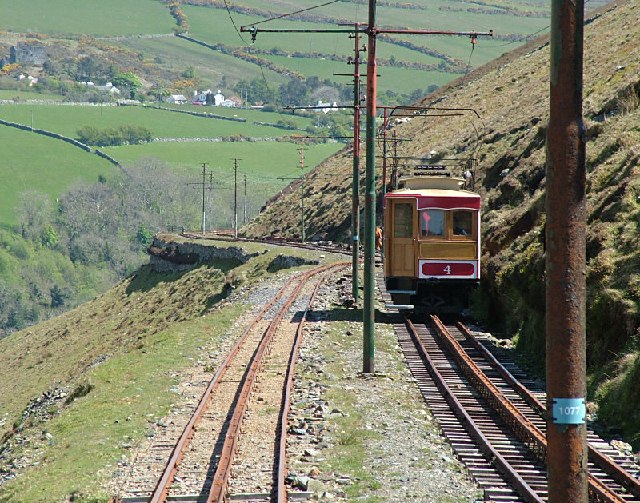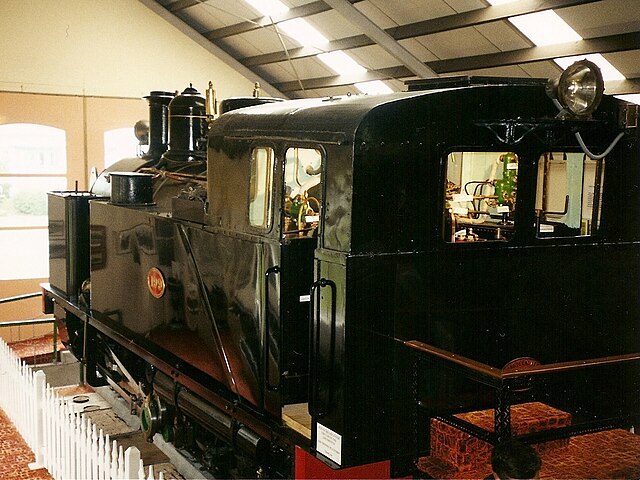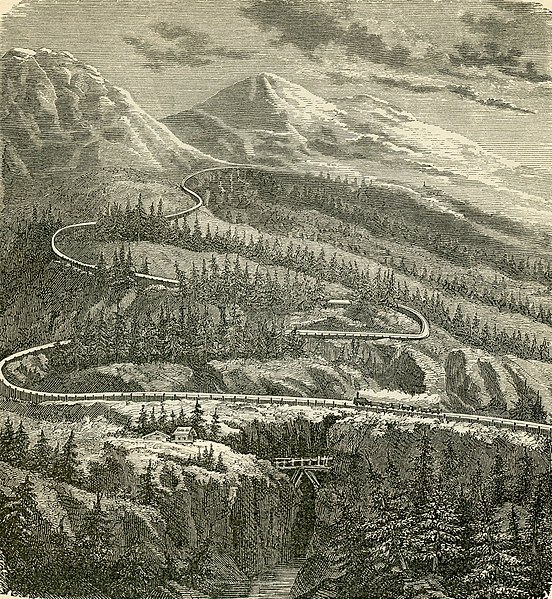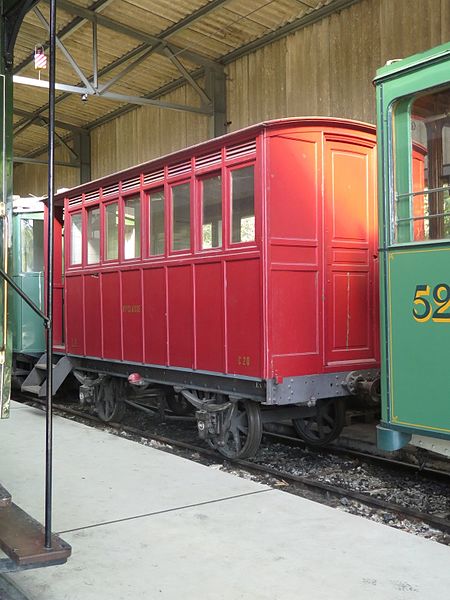Fell mountain railway system
The Fell system was the first third-rail system for railways that were too steep to be worked by adhesion on the two running rails alone. It used a raised centre rail between the two running rails to provide extra traction and braking, or braking alone. Trains were propelled by wheels horizontally applied and retracted by springs onto the centre rail, controlled from the cab, as well as by the normal running wheels. In practice, the running wheels could be allowed to run freely to reduce wear, but the centre brake shoes needed to be replaced frequently. For example: the locomotives' shoes were replaced after each journey on the Mont Cenis Pass Railway. Extra brake shoes were fitted to specially designed or adapted Fell locomotives and brake vans, and for traction the prototype locomotive had an auxiliary engine powering the horizontal wheels. The Fell system was developed in the 1860s and was soon superseded by various types of rack railway for new lines, but some Fell systems remained in use into the 1960s. The Snaefell Mountain Railway still uses the Fell system for (emergency) braking, but not for traction.

Fell system on the Snaefell Mountain Railway
"Cutaway" of underside of Mont Cenis Pass Railway locomotive. The brake shoes are between the firebox and the horizontal drive wheels.
Preserved Fell locomotive H199 in the Fell Engine Museum, New Zealand, 20 March 2002
The underside of H199, showing details of the Fell railway system, 20 March 2002
The Mont Cenis Pass Railway operated from 1868 to 1871 during the construction of the Fréjus Rail Tunnel through the Alps between Saint-Michel-de-Maurienne, southeast France and Susa, Piedmont, northwest Italy. It was designed by John Barraclough Fell and his three-rail design was used on some other mountain railways. The railway was 77 kilometres long, with a gauge of 1,100 mm. The height at the summit was 2,283 metres (7,490 ft) and the maximum gradient was 9 per cent. It was used to transport English mail to India as part of the 1,400-mile (2,300 km) All Red Route.
Woodcut from 1880 showing the terrain, with the railway and road following the same alignment
Fell system engine, with typical train of three passenger cars, a luggage van, and a guard's van with ducket
Mont Cenis Railway passenger car, preserved at the Blonay–Chamby Museum Railway
Section of line with a metal avalanche shed








